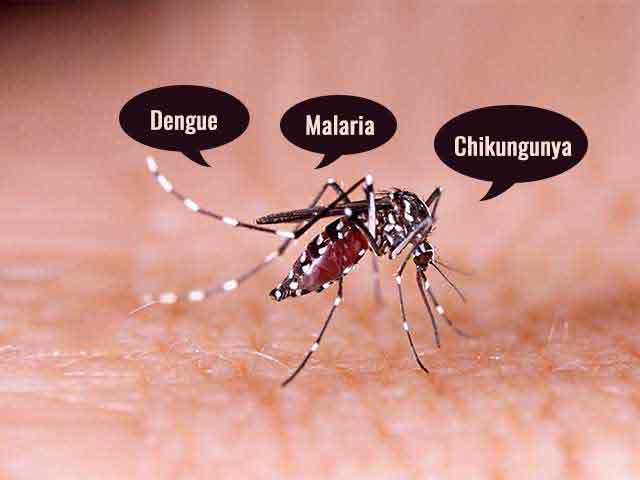Telangana Faces Rise in Chikungunya Cases
Telangana Grapples with Rising Chikungunya and Dengue Cases
Increasing Public Health Concern
Telangana is currently experiencing a significant surge in chikungunya and dengue cases, raising alarm among health officials and residents alike. This year alone, the state has reported approximately 152 more chikungunya cases than in previous years, signaling a disturbing upward trend in mosquito-borne diseases. The rise in cases has been attributed to a combination of factors, including the growing resistance of mosquitoes to traditional control measures and the increasing virulence of the viruses responsible for these illnesses.
Challenges in Mosquito Control
One of the primary challenges in combating the spread of chikungunya and dengue in Telangana is the reduced effectiveness of conventional mosquito control methods, particularly fogging. While fogging has long been a standard practice in mosquito control, experts are now questioning its efficacy, especially in addressing the species of mosquitoes responsible for spreading dengue and chikungunya.
“Fogging is primarily designed to target malarial mosquitoes, which are active between 6 PM and 8 PM. However, it does little to control the mosquitoes responsible for spreading dengue and chikungunya,” explained a health official. This limitation means that while fogging may help reduce the population of evening-active mosquitoes, it fails to significantly impact the day-biting mosquitoes that transmit these more virulent diseases.
The Need for Effective Measures
Given the limitations of fogging, health experts emphasize the importance of addressing the root cause of mosquito proliferation: stagnant water. Mosquitoes, particularly those responsible for spreading chikungunya and dengue, breed in standing water, making it crucial to eliminate such breeding grounds to effectively combat the spread of these diseases.
“The only effective way to combat these mosquitoes is by eliminating stagnant water where they breed,” the official added. This strategy involves both individual and community efforts to identify and remove potential breeding sites, such as unused containers, open drains, and waterlogged areas.
Community Involvement and Preventive Measures
In response to the growing threat posed by chikungunya and dengue, Telangana’s health authorities are calling for greater community involvement in preventive efforts. Residents are being urged to take proactive measures to clean local water bodies and ensure that there is no stagnant water around their homes. This collective approach is seen as critical in reducing the mosquito population and curbing the spread of these diseases.
Moreover, the government is enhancing public awareness campaigns to educate citizens on the importance of maintaining clean surroundings and regularly inspecting their premises for potential mosquito breeding sites. By fostering a sense of shared responsibility, the state hopes to mobilize communities to take the necessary steps to protect themselves and others from these debilitating diseases.
The Urgency of the Situation
The rise in chikungunya and dengue cases in Telangana is not just a matter of numbers but a reflection of the broader public health challenge the state is facing. The increasing resistance of mosquitoes to traditional control measures, coupled with the escalating virulence of the viruses, underscores the urgency of adopting more effective and sustainable approaches to mosquito control.
As the state grapples with this alarming trend, the focus must shift from relying solely on methods like fogging to more comprehensive strategies that address the root causes of mosquito proliferation. This includes not only eliminating stagnant water but also enhancing surveillance, improving healthcare access for affected individuals, and continuing research into more effective mosquito control technologies.
Conclusion
Telangana’s battle against chikungunya and dengue is a reminder of the ever-evolving challenges in public health. The rise in cases highlights the limitations of traditional mosquito control methods and the need for more innovative and community-driven approaches. As the state continues to confront this surge in mosquito-borne diseases, the cooperation between health authorities, communities, and individuals will be vital in curbing the spread and ensuring the health and well-being of its residents.
Chikungunya and dengue are both viral diseases transmitted by the bite of infected mosquitoes and have similar clinical features. Both diseases are most prevalent in tropical and subtropical regions and are spread by the same mosquitoes, Aedes aegypti and Aedes albopictus. However, there are some differences between the two diseases
Chikungunya virus infection is more likely to cause high fever, severe arthralgia, arthritis, rash, and lymphopenia, while dengue virus infection is more likely to cause neutropenia, thrombocytopenia, hemorrhage, shock, and death
Disclaimer:
This article is based on current health reports and expert analysis regarding the rise of chikungunya and dengue cases in Telangana. Information may evolve with ongoing health interventions and updates.

